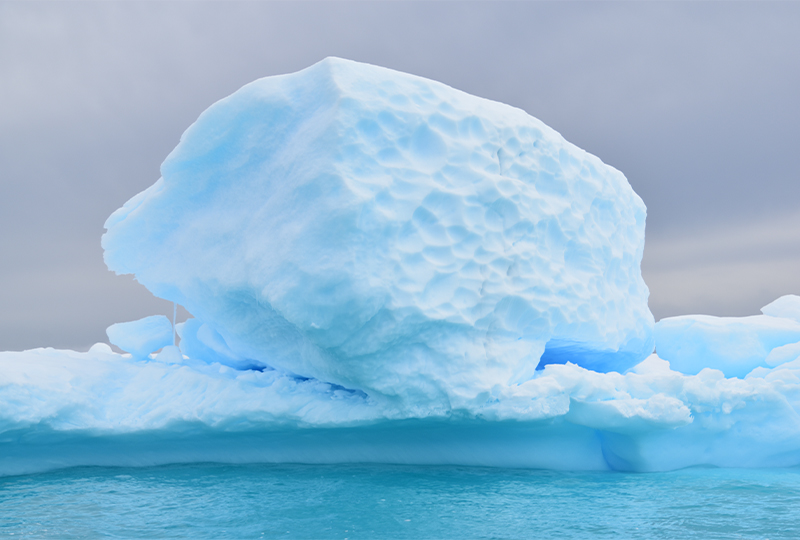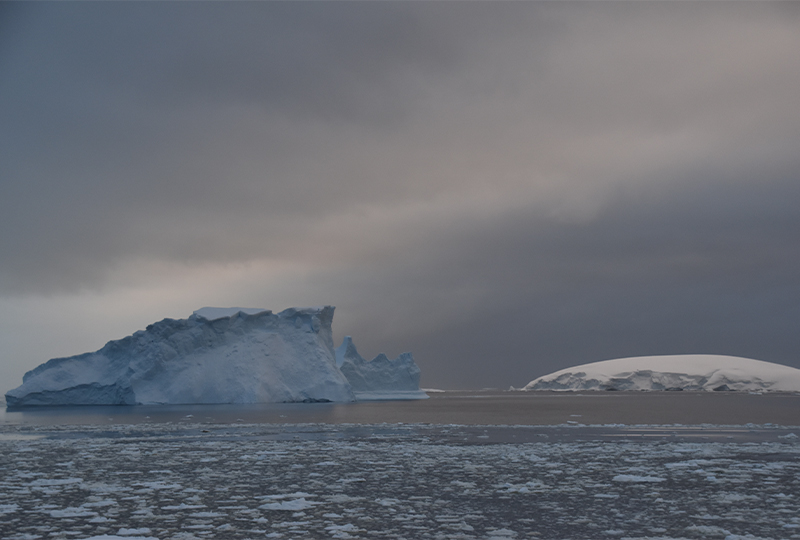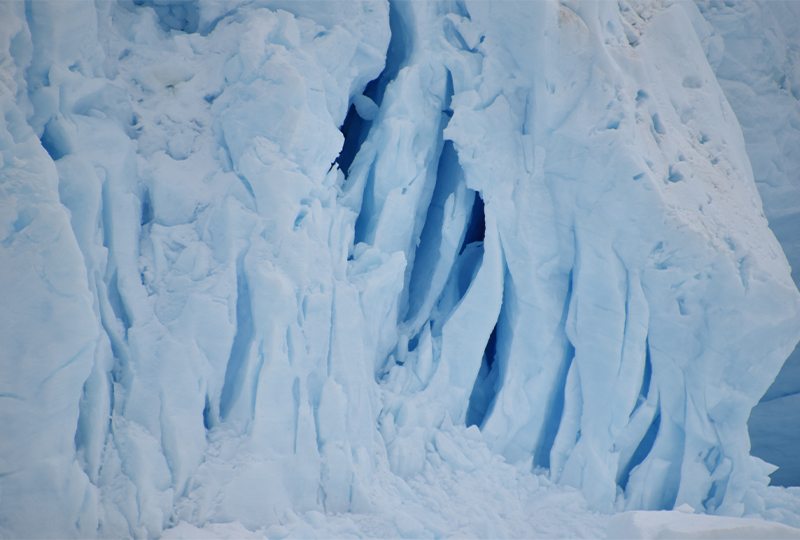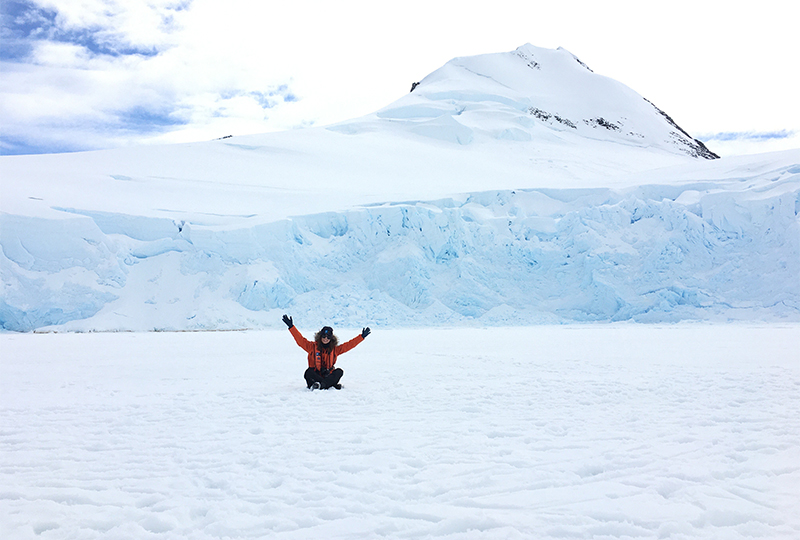Lorna Ronald, Ph.D., director of the Office of Prestigious Fellowships, said the students’ early start in the lab, as well as their close collaboration with faculty, were significant factors in receiving the award, which is granted to sophomores and juniors.
“The Goldwater Foundation is looking for students who will become our nation’s leaders in STEM research, so they’re interested in students who have already made an impact, sharing their findings at conferences and in publications,” Ronald said. “Our two Goldwater scholars started undergraduate early and have great mentors. Both Dr. Ipsita Banerjee and Dr. Nicholas Sawyer have worked closely with these students to enable them to produce national quality research as undergraduates.”
Researching Natural ‘Chemo-Targeting Devices’
Biggs’s research explores how proteins (and peptides) can be designed from natural products—or molecules that are produced by living organisms such as bacteria, fungi, fish, mollusks and plants—can be used as “tumor-targeting devices.”
“The goal is to be able to specifically target therapeutics to the tumors, so that it avoids damage to non-cancer cells, and mitigate the side effects that chemotherapy is known for,” said Biggs, a junior majoring in biochemistry.
Biggs and Banerjee grew replica multi-cellular miniature tumors as models in the lab to test their newly designed molecules and examine mechanisms of drug delivery into the tumors. This summer, she’s going to continue her work, this time with ovarian tumors and “other naturally derived cancer targeting molecules.”
“It’s just been wild to be an undergraduate and to have access to these kinds of research opportunities,” she said.
Biggs joined Banerjee’s lab her first year, after going to talk with her about declaring her major.
“She is fantastic,” Banerjee said. “She was always interested in natural product work and the applications of biochemistry and chemistry. She’s a quick learner and one thing I look for in my students is ambition and passion for research. She has the ambition, the motivation, perseverance and she’s very detail oriented.”
The Role of Shapes in Chemistry
Victorio, who will earn one bachelor’s degree in chemistry from Fordham University and a second bachelor’s degree from Columbia University in chemical engineering as a part of Fordham’s 3-2 cooperative program in engineering, was nominated for the Goldwater award through Columbia.
Sawyer said that he and the students in his lab work on developing peptides—short chains of amino acids—that act as treatments and gain access to the cell’s interior.
“What Clara set out to do is help us, as a scientific community, develop a fundamental understanding of how shape plays a role in how peptides enter cells,” he said.
Victorio’s work included an accidental discovery: She set out to take a peptide that had one shape and turn it into a second type of shape, but her work showed that it can actually make a third shape as well.
“It’s really rewarding when a reaction works as expected, because it doesn’t always do that,” she said with a smile. “But, some of the results of the reactions were surprising, and they spun into these whole new avenues.”
Sawyer said that Victorio’s work is at the center of a collaboration with colleagues from the University of Missouri, where they’re continuing to study “where this third shape comes from, and what the factors are that contributed to making that happen.”
]]>A Visa lottery winner finds her path to medical school
Growing up in Albania, Sonola Burrja never imagined that she would move to Mamaroneck, New York, and study in the United States. But when her family won the U.S. government’s Diversity Immigrant Visa program lottery in 2018, the plan changed.
“The plan was that my younger brother and I get educated outside of Albania, which would probably result in our … not going back, [but]when we won the U.S. lottery, my parents saw it as a great opportunity for the entire family to stay together,” says Burrja, who graduated from Fordham College at Rose Hill in May.
Now, just five years after moving to New York, she’s a first-year student at Albert Einstein College of Medicine in the Bronx. And she can’t imagine not having gone to Fordham, where she joined the pre-health program, majored in biological sciences, minored in German, and was part of the University’s inaugural group of ASPIRES scholars. Partially supported by the National Science Foundation, the program—which stands for Achievement in STEM through a Program of Immersive Research Experience and Support—provides a select group of undergraduates with scholarships for their four years at Fordham, guidance in and out of the lab, and funding for their undergraduate research.
Conducting Ethical Research
Through ASPIRES, Burrja began collaborating with professors and conducting research almost right away—albeit not in the way she expected. It was March 2020, when COVID-19 spread to the United States, so her plan to conduct in-person research had to be put on hold in favor of a virtual research project.
“I was supposed to meet up with a researcher at Fordham that week that everything got shut down,” she recalls. Instead, she spent the summer working with Rachel Annunziato, Ph.D., a psychology professor and associate dean for strategic initiatives at Fordham College at Rose Hill, studying statistical data on diabetes and COVID-19 comorbidity.
Burrja went on to earn three undergraduate research grants from Fordham to support her work with biology professor Marija Kundakovic, Ph.D. She joined the Kundakovic Lab to study the epigenetic effects of hormones in female brains.
“I never knew that there were so many differences between female and male brains—and that somebody at Fordham was actually tackling this issue,” Burrja says, explaining why she asked Kundakovic to be her mentor. “I really thought it was very interesting because some conditions, for example, depression and anxiety, have a sex bias of females during their reproductive stage. There are some huge differences, and we still don’t know enough about this topic—and the brain generally is a very unexplored area.”
To help her navigate the ethical questions that need to be taken into consideration when conducting research, Burrja took Ethics and Research, a course that allowed her to “discuss some very difficult dilemmas” and think deeper “about some issues that don’t really come into our lives, but if you go into medicine or if you go into actually doing research, those issues might come up—and there are actual consequences to being on one side or the other.”
And they will come up: Burrja plans to become a doctor. She’s not yet sure what her specialty will be, but one thing in particular is a must.
“The patient interaction part is something that I would not want to sacrifice,” she says. “I would like to be able to speak with them and just be an advocate for them, especially working with underserved populations.”
Read more “20 in Their 20s” profiles.
]]>“Our body essentially is like a laboratory—you have chemical reactions going on 24/7,” said Ipsita Banerjee, Ph.D., chair of the chemistry department and professor of chemistry. “Biochemistry is essentially a study of what reactions are going on in your body; how do we actually stay alive?”
Banerjee said that after she became chair of the chemistry department in 2018, she and a team of faculty members from the biology and chemistry departments worked to develop the minor in biochemistry, which was launched in 2020.
After the COVID-19 pandemic, she worked on developing the major with a team of chemistry faculty members, who developed new courses for the Biochemistry major. The major was approved by the New York State Department of Education this summer.
The major will be open to all students starting this fall. For now, incoming first-year students who are interested in the major will come in as undeclared, though they can still begin to take classes toward it. Beginning next fall, first-year students will be able to enter as biochemistry majors.
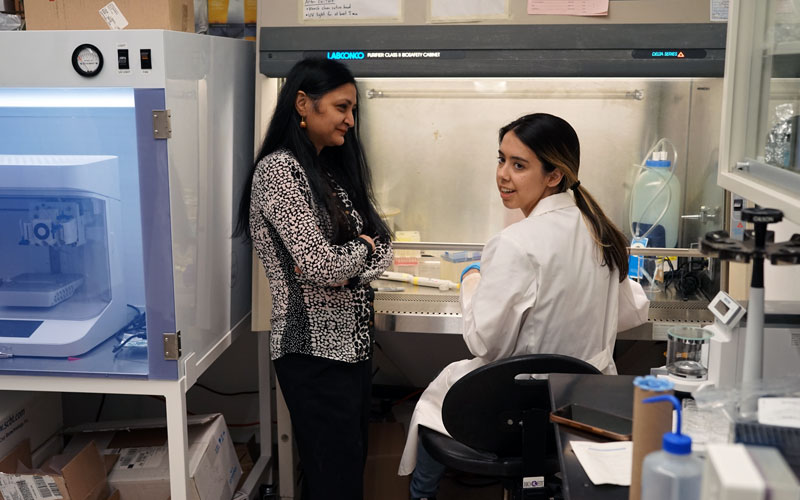
Preparation for Biotech, Medical Industries
Banerjee said that biochemistry studies will help prepare students for the expanding biotech industry, which has seen massive growth post-COVID.
“There are so many diseases today that we still don’t have a cure for—Parkinson’s, Alzheimer’s, cancer, to name a few,” she said. “While there has been progress made, much more needs to be done to understand how these diseases work, you really have to understand how things work at the molecular level—that’s what biochemistry does.”
Banerjee said that the degree will also help prepare students for graduate and medical school as well as careers in areas such as biochemistry, forensic science, pharmacology, biomedical engineering, biomedical sciences, and other health-related fields.
She noted that there’s been a real interest from students in this type of major.
“Many of the STEM students are interested in a career in medicine, allied health fields, or health professions, so biochemistry essentially ties into that,” Banerjee said.
Hands-On Learning in Biochemistry
The major has an interdisciplinary focus, according to Banerjee, as it integrates lessons from both biology and chemistry and adds new courses to broaden students’ exposure to the subject. This allows students to “approach it in a way that is interesting to [them].”
There are two tracks within the major—an American Chemical Society (ACS) certified track and a general track. Students who are interested in chemistry and advanced structural and molecular aspects of biochemistry may choose the ACS track, while students who are inclined more toward cell, molecular, and structural aspects of biochemistry and physiological approaches may pursue the general track.
Students will start by taking introductory STEM courses in biology, chemistry, physics, and calculus to lay the foundation for their work, she said.
“The upper-level courses are where they can really start immersing themselves,” she said. Those include Molecular Biology, Physical and Computational Models of Biochemical Systems, Biochemistry I and II, Methods of Biochemical Research, and more.
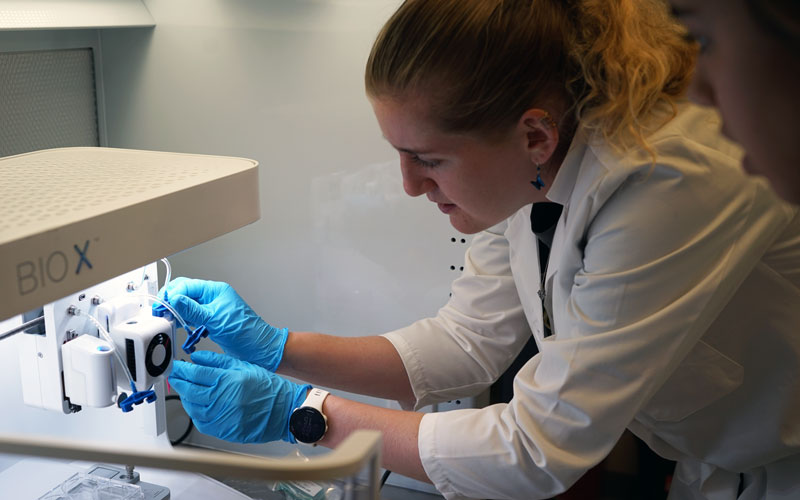
Research Opportunities
Biochemistry majors can also work to join research laboratories, such as Banerjee’s and those of other faculty members who are doing chemical biology, biophysical, and cell and molecular biology-related research.
This gives students opportunities to gain hands-on experience and potentially publish their work in peer-reviewed scientific journals, Banerjee said, as students will be engaged in challenging research projects and feel an ownership toward their projects.
“My biggest passion at Fordham is working with students in the research lab, and preparing them to become next-generation scientists,” Banerjee said. “Research is a big part of our department as a whole, so students will have ample opportunities to do research with the mentor of their choice.”
STEM Partnerships in NYC
Banerjee said that she believes this major will help elevate the University’s connections to growing STEM industries.
“I think one of the things we’re really trying to do, given the location of Fordham being in New York, is expand into the biotech industry, have partnerships with the larger community within New York as well as the suburbs, Westchester, all those areas,” she said. “I think by having this biochemistry major it will also provide, in addition to working with faculty mentors here, internship opportunities for students.”
]]>In preparation for their second date, Dennis read the entire trilogy in a week. “The rest, as they say, is history,” he said.
They married in 1968, creating a kind of union of the arts and sciences. Dennis Marks, FCRH ’66, was a physics major who had wanted to be an astrophysicist for as long as he could remember. Patricia, a 1965 graduate of Douglass College, part of Rutgers University, had wanted to be a writer ever since playing with a portable typewriter in her bedroom as a girl.
They pursued their ambitions together, earning doctorates in astronomy and English and later securing faculty positions at Georgia’s Valdosta State University, where they are now professors emeritus.
Strong believers in liberal arts education, they recently set up a bequest to establish an endowed chair in cosmology at Fordham, supporting the University’s $350 million fundraising campaign, Cura Personalis | For Every Fordham Student, which seeks to enhance the entire student experience.
Students will find plenty of mind-bending questions in cosmology, the science of the origins, structure, and nature of the universe. Dennis Marks, for his part, has focused his research on finding a common mathematical language for Einstein’s theory of relativity and the quantum mechanics of particles too small to be seen. He noted that cosmology is a broad field, encompassing scientific fields but also philosophy.
Patricia Marks, an Episcopal deacon, also deals in the unseen, or at least the little noticed. She built the web page Sisters in Faith to bring attention to the mission work of Episcopal deaconesses between 1885 and 1970. And in the latest of her six books, They All Said Amen: Unheard Voices in the Bible, she writes about the spiritual experience of people in the background during biblical events. Using a modern analogy, she wrote in the book that while those in the limelight are long remembered, “the ones who carry the trays of snacks are there too. The passersby in the hall, the assistants, are there. We are there too, and we are listening.”
Tell me more about cosmology and why you decided on that field for this endowed chair.
Dennis: Cosmology really is the place where you can tackle big questions. My favorite course to teach was titled Cosmology, and I co-taught it with a philosophy professor. It’s not only about the origin of the universe and how the universe grows and how it increases in complexity and consciousness, but also what’s knowable, and how do we know it? One of the breakthroughs in quantum mechanics has to do with the fact that when we measure something, we inevitably bring ourselves into the measurement, so there’s no absolute objectivism, but by the same token, our subjectivism is shaped by what’s outside us and not just what’s inside us. I believe that cosmology has ramifications in all other disciplines, from the origin of the chemicals to quantum theology.
Come again? Quantum theology?
In senior theology at Fordham, I was taught by a priest who proposed, essentially, a scientific experiment—what do different religions say about the mystical experience? He wanted to get something that was not culturally determined. What he found in common across religions was the idea that, essentially, all is one, that there is no separation between the other and the self, and so on. And to some of us, it really sounded like an application of quantum mechanics, in which there’s no separation between here and there. And so quantum theology builds a theology on the interconnectedness of the one and the other.
Patricia, how did you get the idea for writing about bystanders in biblical stories in They All Said Amen?
It probably stems from my coming in contact with students who are basically forgotten by the system. One of my students, an African American girl who was the first in her family to go to college, asked me this question about an assignment: “Would it be all right for me to write about Rosa Parks?” You can imagine that people had said to her, “We cannot talk about African Americans who are heroes.” And a friend of mine who was a very good Baptist used to come to our [Episcopal] Vespers group and join me in special services. She very much wanted to be a deacon in the Baptist church, but couldn’t, as a woman, so she came to a place where women were allowed to do many of the things that she couldn’t.
And so I started to think it would be interesting to take a look at the people in Bible stories who were probably standing on the side—the woman listening and thinking, “Oh, this is wonderful,” but unnoticed by anyone. This, I think, is very much related to what I’ve been doing—visiting people who were basically forgotten in nursing homes or who were having problems at church and personal problems. You listen to them, and it makes a real difference.
Does this kind of theme show up in your other work?
I love researching ideas and stories that were basically forgotten, which is why I’ve done all that research on the deaconesses. It’s very difficult in some cases to uncover any information about these women who went by themselves to foreign countries at a point where women were not supposed to travel by themselves, and yet they went ahead and they set up libraries, they set up hospitals.
You’ve both been affiliated with a number of universities. Why did you choose Fordham for this chair?
Dennis: We decided on Fordham because of its commitment to undergraduate liberal education, or education for life. One of the delights at Fordham was being in class and hearing resonances of ideas in other disciplines, so that the disciplines were each like a piece of a single cloth. Because of the accelerated physics major, we were block scheduled, and so you had a theology professor trying to prove to 28 physics majors that you can violate the laws of nature and have miracles. It was a challenge for the faculty, as well as for the students, and it was a wonderful experience. I really think that the boundaries between disciplines are just for administrative purposes. There really is, in my mind, only one academic enterprise.
To inquire about giving to any area of the University, please contact Michael Boyd, senior associate vice president for development and university relations, at 212-636-6525 or [email protected]. Learn more about Cura Personalis | For Every Fordham Student, a campaign to reinvest in every aspect of the Fordham student experience.
]]>The $150,000 grant will fund a camp to be held in July 2023, geared toward students from minority communities in the Bronx.
University Professor Thaier Hayajneh, Ph.D., founding director of Fordham’s Center for Cybersecurity, said the focus of the camp, which will be held in person for the first time, will be on educating students about cryptography and cryptocurrencies.
The previous camp was held virtually and focused on mobile phone security. Because the pandemic made in-person meetings unfeasible, Hayajneh and camp organizers mailed iPhones and Samsung phones to participants and led them through exercises via Zoom sessions. Students were also mailed t-shirts, gift cards, and food vouchers.
“Throughout the camp, we taught them the principles and the basics of cybersecurity in the beginning, and then they practiced those principles and concepts on an actual system—in that case, it was the smartphones. We didn’t want them to ruin their own phones or their parents’ smartphones,” he said.
To make it more enjoyable, organizers encouraged students to make and exchange videos of themselves conducting exercises with the phones they were sent. An agent from the FBI also shared details from a real case involving smartphone security. In surveys conducted at the camp’s conclusion, many students indicated a strong interest in pursuing a career in cybersecurity.
Cryptocurrency: Good Hype and Bad Hype
In focusing on cryptocurrency for next summer’s camp, Hayajneh said the goal is to shine a light on an area that has both tremendous potential and potential risks.
“Even my 8-year-old has asked me about Dogecoin. Kids hear about it from their friends and want to know how they can buy cryptocurrencies. We don’t want teenagers to fall victims to scams and other malicious activities that could target them in the future,” he said.
In addition to teaching students the basics behind Blockchain, the technology that makes cryptocurrency possible through security, transparency, and traceability, instructors will explain how cryptocurrency can be used for nefarious purposes, such as ransom payments.
“There’s good hype and bad hype about cryptocurrencies, so we’ll introduce the students to it, and also make them aware of the value and risks,” he said.
“Unlike banking, where if you make a bad transaction, you can call your bank and tell them it wasn’t what you did, or they made a mistake, with crypto, once a transaction happens, it’s done. You can never reverse that. So that’s one of the scary things about it.”
The second grant for a new session of camp is further validation from the NSA of Fordham’s leadership in the field, Hayajneh said. In 2017, the NSA designated the University a National Center of Academic Excellence in Cyber Defense Education (CAE-CDE).
“One of the main goals of Gen Cyber is to increase the interest in cybersecurity, and hopefully many of those kids that are tech-savvy become ethical hackers,” he said.
]]>
“Everyone brings something important to the table, regardless of the level of education you have,” said J.D. Lewis, Ph.D., a biological sciences professor who is leading the Fordham team in the Howard Hughes Medical Institute’s Inclusive Excellence 3 Learning (IE3) Community. “Through this collaborative effort, we want to figure out how to teach STEM in a way that is accessible, relevant, and interesting to all our students.”
Fordham is among more than 100 institutions involved in the IE3 Community. The goal of the initiative is to improve STEM teaching and learning in higher education, especially for first-generation college students, transfer students, and students from underrepresented backgrounds.
More Inclusive Intro STEM Classes
After applying to be part of the initiative in 2019, Fordham was accepted into the inaugural cohort in 2021. The institutions were grouped into seven clusters, each with an assigned goal. The goal of Fordham’s cluster is to make introductory STEM course content more inclusive. Ultimately, Fordham wants students who better reflect the racial and intersectional diversity of the Bronx community to enter STEM disciplines and graduate at rates comparable to those of majority students, said Lewis.
Lewis leads Fordham’s IE3 leadership team, which is currently planning the details of the project. They are joined by Dean of Fordham College at Lincoln Center Laura Auricchio, Dean of Fordham College at Rose Hill Maura Mast, Associate Professor of Chemistry Robert Beer, Associate Professor of Biological Sciences Patricio Meneses, and CSTEP Director Michael Molina.
One of the team’s goals is to build on the University’s previous successes with mentoring and early research experiences, especially Project TRUE, the ASPIRES Scholars program, the Calder Summer Undergraduate Research Program, and Fordham’s Collegiate Science and Technology Entry Program, said Lewis. For example, they are currently working with CSTEP to include more CSTEP students in research opportunities earlier on in their time at Fordham, said Lewis.
The team will also assess the University’s data on students taking STEM classes, starting with the biology department. They are planning on studying student outcomes, including the DFW rate—the number of students who earn D’s or F’s or withdraw from the course, said Lewis. They may also interview introductory biology instructors and students to understand the support they might need, said Lewis.
“From them, we can get a sense of what’s working, what isn’t, what they’re struggling with, what they’re concerned about, and where and why they may not feel included,” Lewis said.
Earlier Research Opportunities Built Into the Curriculum
In addition, the team is working on integrating student-directed research earlier in the STEM major. Upperclassmen typically conduct their own research in labs on campus, said Lewis, but their team is revising the curriculum so that they can introduce research to students as early as their first year of college. For example, the biology department recently introduced “research modules,” a new component in an introductory biology lab that gives students more creative freedom, said Lewis.
“Instead of students simply following a manual type of lab activity, they are doing research where we don’t know the answer beforehand. They are experiencing those eureka moments, while still learning biology skills,” Lewis said. “Instead of waiting to work in a lab as a junior, they’re doing research that is yielding an unknown result—now, as a second-semester first-year student.”
This fall, Fordham will finalize its project plan in collaboration with 14 other universities. Over the next six years, they will work together to achieve their goal through nearly $8 million in shared funding from the Howard Hughes Medical Institute, a science philanthropy organization founded by aviator and industrialist Howard R. Hughes.
“We want all Fordham students and prospective students to see and feel that they can be successful in a STEM major and career,” Lewis said. “I hope that our data will lead us to what that should look like.”
]]>“We want to set up a network of air quality sensors around the city and map out the air quality—particularly in the Bronx—and help students become scientifically literate activists in their communities,” said Stephen Holler, Ph.D., chair and associate professor of Fordham’s physics and engineering physics department, who is co-leading the project with Usha Sankar, Ph.D., an advanced lecturer in biological sciences. “Through our project, we can start a dialogue about climate change and say, ‘Let’s do something to fix it together.’”
Air pollution triggers many respiratory illnesses. One in 13 Americans have asthma, according to the Asthma and Allergy Foundation of America. Among the five New York City boroughs, the Bronx has the highest percentage of asthma diagnoses for children up to age 12, as well as the highest child asthma hospitalization rates.
The goal of Project FRESH Air (Fordham Regional Environmental Sensor for Healthy Air) is to combat those statistics with education.
Holler has started setting up a network of PurpleAir air quality sensors in middle and high schools in the Bronx and upper Manhattan, including Jonas Bronck Academy, All Hallows High School, and Cristo Rey New York High School. Each sensor—not just the project sensors in the city, but independent Purple Air sensors worldwide—records data 24/7. The data is viewable on an interactive map in real time.
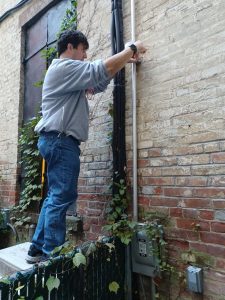
The project garners interest because air quality is an issue people can relate to, Holler said.
“I don’t think that many people in the Bronx are interested in the fact that it’s going to be one or two degrees warmer in a few decades. If you’re living paycheck to paycheck and worried about your kids, that’s not your high priority, right? So we’re tackling this issue by looking at it through an air quality perspective,” said Holler, who has previously worked with local students on climate change projects. “Air quality will degrade as the climate changes. We’ll have more pollution and particulate matter in the air from combustion sources, vehicles, and the urban environment, which irritate the lungs and aggravate asthma. But this is an immediate problem that we can address.”
The FRESH Air team, which includes Fordham faculty, undergraduates, and middle and high school educators, is now working on ways to incorporate the sensors and their data into middle and high school curricula. Students will be able to build their own handheld sensors with special kits. They will also be tasked with plotting air quality data from their sensors and searching for trends.
“They can plot the data in Microsoft Excel or Google Sheets and correlate it with factors like weather. Was the air quality better on this day or another? Was there a holiday? And they can start to understand the dynamics and patterns that are happening in their community,” Holler said.
This fall through a virtual webinar, the FRESH Air team introduced the project to students and families at Jonas Bronck Academy, located one block away from the Rose Hill campus.
“The day after the informational session, our students were asking questions to all five of us teachers,” said Alexiander Soler, a seventh grade science teacher at JBA. “‘What is air quality? How does that relate to us? How does it connect to asthma?’”
Next spring, JBA will integrate Project FRESH Air into its sixth, seventh, and eighth grade curricula. The sixth graders will learn about air pollution and how it’s measured, the seventh graders will learn about health implications affected by air quality, and the eighth graders will learn how technology improves data collection, while using the sensors and their data, said Soler. Fordham undergraduates will also work with students on a weekly basis to help them analyze their data, said Holler. About 260 students at JBA will benefit from this curriculum, said Soler.
“These sensors are effectively going to be permanent installations,” Holler said. “Over the next two to three years, we are looking to have about 25 schools on this project.”
The project originally emerged from the Higher Education Incubator and Think Tank led by Eva Badowska, Ph.D., dean of the faculty of arts and sciences and associate vice president for arts and sciences, and Anne Fernald, Ph.D., professor of English and special adviser to the provost, before the pandemic. It is being largely funded by James C. McGroddy, a former senior vice president and director of research at IBM who wants to promote STEM education, especially for minority and underserved populations.
“The purpose of science is to gain an understanding of the natural world and its impact on our lives. This project will create a real scenario that our students can identify with, and hopefully increase their interest in science and becoming problem-solvers,” said Soler. “It will allow our students to see how science truly affects their lives.”
]]>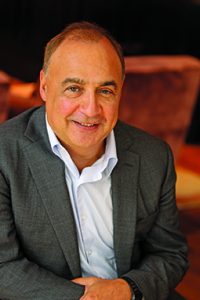
“It is increasingly obvious that the STEM disciplines now share the same prominence as the humanities as a lingua franca of educated citizens,” said Joseph M. McShane, S.J., president of Fordham. “One cannot navigate the modern world without a basic understanding of STEM, and the Blavatnik Family Foundation gift helps ensure Fordham students are equipped to lead their fields in the decades ahead.”
The foundation was established by Len Blavatnik, the Ukrainian-born, American-educated industrialist who holds dual citizenship in the United States and the United Kingdom. Through the foundation, Blavatnik has given more than $800 million to institutions around the globe.
“Fordham’s next 181 years will be shaped largely by its STEM programs,” Roger A. Milici, Jr., PAR ’22, vice president of Development and University Relations, said of the University, which will celebrate its 181st anniversary in June. “This inaugural investment by a global philanthropist, generously made through the Blavatnik Family Foundation, is both inspiring and acknowledgment of how philanthropy creates impact. This gift will advance our ability to make a rigorous Jesuit education in the capital of the world more accessible and richer in this important field of discovery and innovation.”
Support for Students Through Scholarship
The foundation has allocated $200,000 of the gift to fund the Blavatnik Scholarship for Excellence in STEM, which will provide financial aid resources to high-achieving Fordham undergraduates majoring in STEM fields.
“Scholarships like this one play an important role in enabling diverse and talented students to come to Fordham to study with our outstanding STEM faculty who are doing groundbreaking work in areas like integrative neuroscience, environmental science, computer science, and more—work that is making a difference in the city, the nation, and the planet,” said Laura Auricchio, Ph.D., dean of Fordham College at Lincoln Center.
Promoting Research
The remaining $50,000 will fund the Len Blavatnik STEM Research Fellowship, which will support student research projects in STEM areas. The fellowship money will be allocated by the deans at Fordham College at Lincoln Center and Fordham College at Rose Hill.
Fordham College at Rose Hill Dean Maura Mast, Ph.D., said the fellowship will provide needed support for student researchers.
“Fordham undergraduates consistently publish with faculty, present at conferences, and are true partners in the creation of new knowledge,” said Mast, who teaches a STEM course based on a recently released second edition of a textbook she co-authored, titled “Common Sense Mathematics.”.
Mast noted that Fordham is one of the top institutions to induct students into Sigma Xi, the scientific honor society; 72 Fordham students joined this past spring. She said she has found that students appreciate that their research may lead to more questions than answers.
“They see STEM as a place of discovery, creativity, complexity, and problem solving,” she said. “Doing science helps them understand the world and make it better.”
She added that some students set out to address the big problems of the day, such as diseases like COVID-19, HPV, and cancer, as well as environmental issues such as climate change, soil erosion, pollution, and water quality. Yet others are drawn to small-scale challenges, like developing ways to use nanowires in common applications such as glucose sensors and fuel cells, studying the relationship between genetic mutations and mitochondrial diseases, and researching particle physics, she said.
“Thanks to donor support that provides funding for research grants, lab supplies, and conference participation, undergraduate research has become a signature program in both [of Fordham’s undergraduate liberal arts]colleges,” she said.
]]>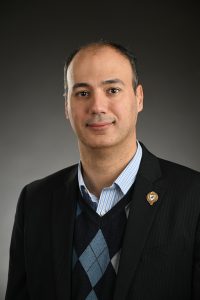
This July, Fordham will welcome about 30 middle school and high school students to campus for a weeklong cybersecurity summer camp.
The camp, which will run from July 27-31, and will be geared toward students from minority communities in the Bronx, is being funded by a prestigious $100,000 grant administered by Gen Cyber, a program jointly run by the National Security Agency (NSA) and the National Science Foundation (NSF). Gen Cyber student camps are currently offered in 40 states, including four other locations in New York state.
University Professor Thaier Hayajneh, Ph.D., founding director of Fordham’s Center for Cybersecurity, said the grant is continued validation from the NSA of the University’s leadership in the field. In 2017, the NSA designated the University a National Center of Academic Excellence in Cyber Defense Education (CAE-CDE).
Fordham currently offers a master’s in cybersecurity that has more than tripled in enrollment since 2016, two computer science master’s degrees with an emphasis on cybersecurity, and a minor for undergraduates. Since 2009, Fordham has also partnered every 18 months with the FBI to organize and host the International Conference on Cyber Security (ICCS), a four-day long conference that last year drew the directors of the FBI and the NSA as well as U.S. Attorney General William Barr.
Hayajneh said the grant is part of the federal security agency’s efforts to educate the next generation of professionals in a growing and critical field.
“It’s a very important grant for the National Security Agency, because they know we have a shortage of cyber professionals. So, they start to work with middle schools and high schools to attract students from that age to go to college and pursue STEM programs with a focus on cybersecurity,” said Hayajneh.
“We need those savvy, ethical hackers and cyber analysts that can crack a code and can break a password. And of course, we’ll use their power to secure our systems, not attack or hack other systems.”
The five-day-long camp will be taught by Md Zakirul Alam Bhuiyan, Ph.D., assistant professor of computer science, as well as computer science graduate and undergraduate students. For four days, the students will be at Rose Hill. One day of classes will also be held at the Lincoln Center campus, where students will get a tour of the Center for Cybersecurity.
The camp will feature guest speakers and a capture-the-flag-style competition at the conclusion of the week. And although all of the grant-funded camps are required to focus on fundamental tenets of cybersecurity, Hayajneh said that individual camps have some leeway in how to present information. For Fordham’s first year hosting the camp, instructors will focus on smartphones. In subsequent years, the camp may focus on other aspects of cybersecurity, such as phishing or robotics.
As part of the grant, students will be given both Android and Apple phones to practice with, as well as PC software that emulates the mobile experience. In addition to reviewing different types of apps and what access they have to users’ information, instructors will review Google and Apple’s process for vetting and guaranteeing that apps are trustworthy. Students will also learn about how phones can be attacked wirelessly via Bluetooth and AirDrop, and how to defend themselves against these technologies.
“We thought that would be a good practice because everyone uses smartphones, and they’re everywhere. In many ways, we take them for granted and we don’t use the best practices when it comes to security and privacy,” he said.
]]>“Antarctica was just completely covered in snow and ice,” Flynn says. “I didn’t really think about [it]before going, but of course the sun is going to be reflecting off of all of this.”
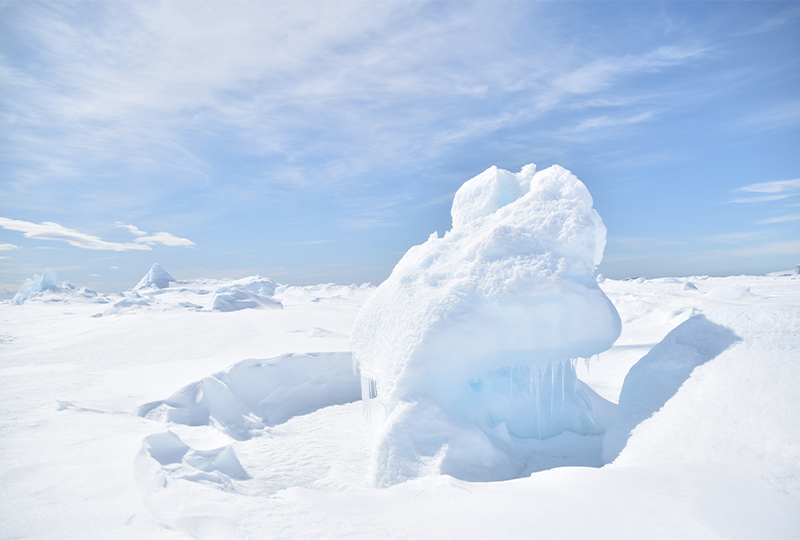
The blindingly bright glare of the sun was just one of the remarkable things Flynn recalled about her three-week journey to Antarctica, the Falkland Islands, and South Georgia as a Lindblad Expeditions and National Geographic Grosvenor Teacher Fellow.
The fellowship, awarded to pre-K–12 educators who have shown a commitment to geographic education, sends recipients across the globe on Lindblad Expedition ships in order gain field experiences that they can bring back to their classrooms and institutions.
Flynn, who earned a master’s degree in biological sciences at Fordham’s Graduate School of Arts and Sciences, is the STEM initiatives program director for the Long Island Children’s Museum, where she has worked since 2016. In her role, she teaches informal education programs for elementary and middle schoolers, mentors teenage volunteers in creating sustainability and nature programming, leads an after-school program for high school girls to encourage an interest in STEM fields, and runs citizen science programs, among other duties.
In the summer of 2018, after completing National Geographic’s educator certification training, she discovered that she was eligible to apply for numerous grant and professional development opportunities through the organization, including the Grosvenor Teacher Fellowship.
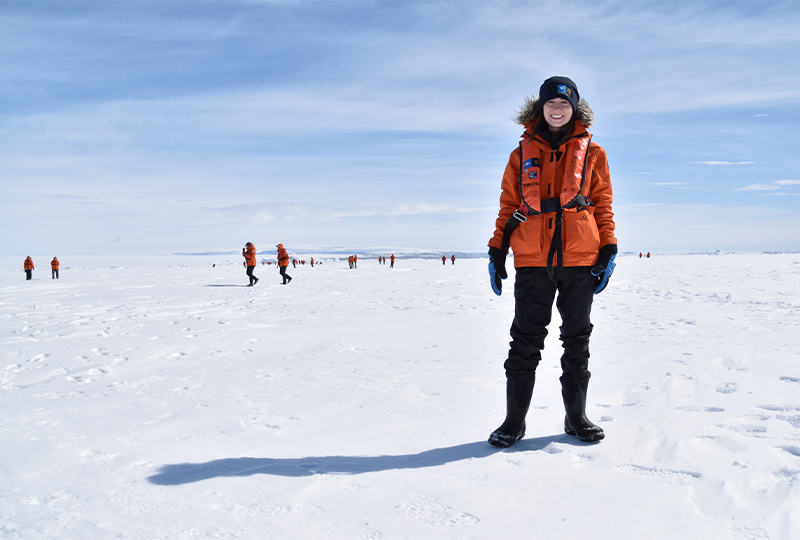
“I applied knowing that it was very competitive, and thinking that it was kind of like a practice run,” Flynn says. “I would apply for it and then I would get feedback and apply again.”
Instead, she got the news that she had been accepted for the 2019 fellowship cohort.
Embarking on a Fantastic Voyage
Along with the 44 other members of her cohort, Flynn provided her preferences for destinations and scheduling, and from there, she was assigned to the National Geographic Explorer and headed for some of the southernmost reaches of the Southern Ocean. To prepare for their voyages, Flynn and the rest of the 2019 fellows participated in a multiday, hands-on workshop at the National Geographic Society headquarters in Washington, D.C., where they learned skills like photography and video editing and gained tips on outreach planning and public speaking.
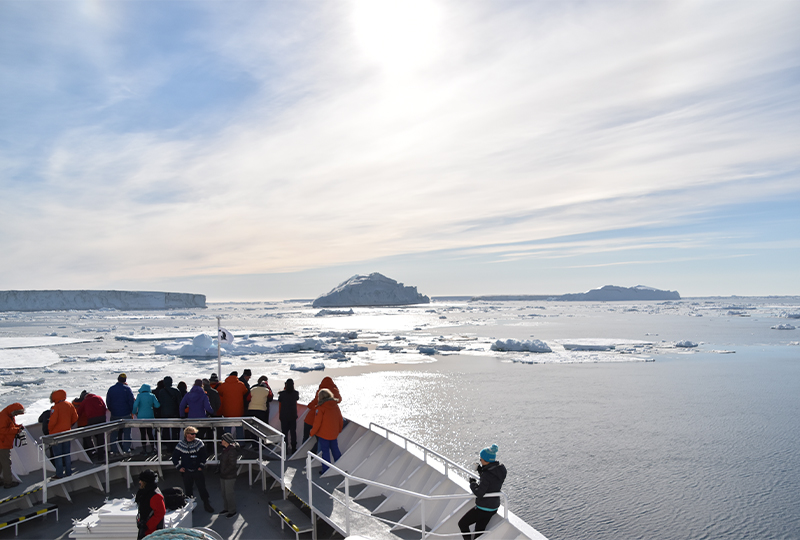
After flying from New York to Miami, from Miami to Santiago, Chile, and finally from Santiago to Stanley, Falkland Island, on November 10, Flynn and the rest of her shipmates began their journey at sea. She was joined on the ship by one other fellow—an environmental science teacher from Miami—as well as paying tour guests and a staff of naturalists from varied backgrounds, including marine biologists, historians, geologists, and a guest speaker, Andrew Clarke, a retired polar ecologist from the British Antarctic Survey who discussed the effects of climate change on the area.
In the Falkland Islands, which is above the Antarctic Convergence and therefore has a relatively mild climate, Flynn saw flora and fauna that looked more familiar to her, including cows and sheep that were right alongside penguins.
When the ship reached its next stop, South Georgia, Flynn and her fellow explorers were able to get even closer to the wildlife there.
“South Georgia is covered in the most incredible mountains that you’ll ever see,” Flynn says. “And the wildlife that we saw there was amazing, in terms of the different kinds of animals that we saw, but also in terms of their number and how close you got to them.
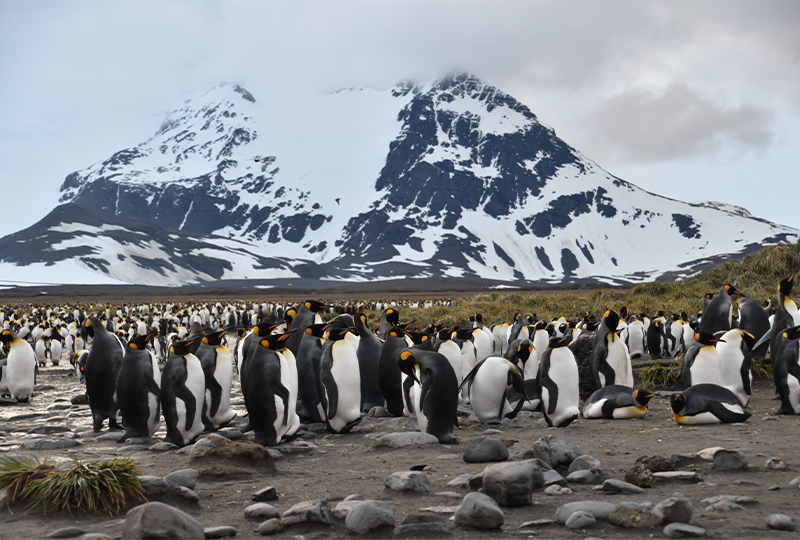
“For instance, [the]penguins don’t have any natural land-based predators, and so they’re intensely curious. So if you just sit down, they’ll come right up to you. They’ll peck at your jacket and things like that. So, the ability to get so close to animals and really observe them in their natural environment was amazing.”
From there, the travelers made their way to the final part of the tour, Antarctica. Aside from the intensity of the reflected sunlight, Flynn says she experienced a landscape—and a seascape—unlike anything she had seen before.
“The colors that you could see in the ice were unexpected,” she says. “The water looked almost tropical because of how clear and blue [it]was. As you’re standing on the bow of the ship and just kind of going through the water, you could hear all of the crackling of the ice, which was really cool.”
A Close Look at Climate Change’s Effects
Of course, the trip was also an opportunity to observe the troubling effects of global warming in these places. Because the ship makes a similar trip every year, Flynn says that staff members described a front-row view of the changes.
“The captain of the ship has been with that ship [about]15 years, and he said that he’s seen noticeable changes in the past 15 years—where they can go and when in the season they can go,” Flynn says, noting that South Georgia’s Neumayer Glacier is receding two meters every day, according to representatives from the South Georgia Heritage Trust who spoke to the ship’s passengers.
Flynn says that the increase in annual temperatures has also created worries about biosecurity on South Georgia, which has seen devastation to native species because of the increasing hospitability to invasive species that find their way onto the island, including rats and reindeer. Before leaving the ship and setting foot on the island, she and the other passengers had to clean off their clothes, bags, and shoes to ensure that not even a single foreign seed or blade of grass made it onto land.
“[We had to] use a screwdriver or a paperclip to take out every single little piece of dirt,” Flynn says, adding that inspectors would check everyone before allowing them to exit the ship and would turn them around if they hadn’t cleaned off well enough.
That kind of experience is something that Flynn knew would be important to share with the students she works with at the Long Island Children’s Museum.
“My feeling going into this expedition was to ask as many questions as I could and try to figure out ways to talk to kids about climate change without it being ridden with anxiety. So as I’ve come home, I’ve been trying to figure out ways that I can disseminate information, but also have it be hopeful.”
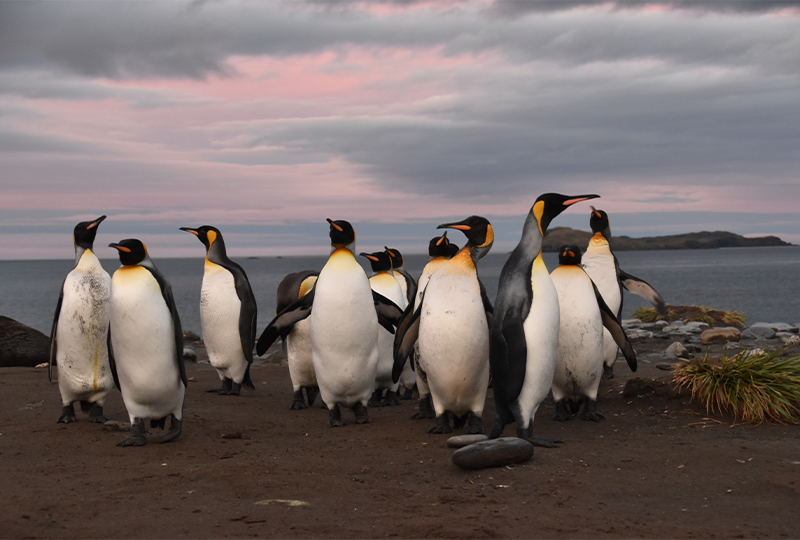
Bringing Exploration’s Lessons Home
The sharing of information with students is an essential component of the Grosvenor Teacher Fellowship. The National Geographic Society requires fellows to provide regular reports during their two-year commitment as program ambassadors, during which time they’re expected to develop a student-action project inspired by the expedition, share the project plan as a resource for other educators, and organize a public event that connects their experiences to the larger community or their professional network.
Flynn is planning an exhibition, titled “Slow Down! Explore … A Journey to the Falkland Islands, South Georgia and Antarctica,” that is scheduled to be on display at the museum from April to June.
“In regular life, it’s very hard to find time to just kind of be,” she explains. “And I felt like on this expedition, I wasn’t the one who is responsible for planning anything. I could just watch the albatross, and I could just look at the elephant seals fighting. You notice a lot more. I felt like I wanted that to be a big component of this exhibit, because I feel like kids don’t have the luxury really of doing that.
“So, we’re going to focus on what it means to be an explorer and how to build curiosity, and the fact that you have to slow down a lot in order to observe or experience certain things. And that oftentimes travel is a way to expand your horizons and to discover new things.”
For Flynn, who had the opportunity to live in France for a year as a Fulbright scholar after her undergraduate studies at Adelphi University, her trip as a Grosvenor Teacher Fellow was filled with things to be discovered, experienced, and observed that were unlike anything else she’s encountered in her life’s travels.
One moment that stands out to her in particular involved an early wake-up that was worth every bit of sleep deprivation.
While in South Georgia, an expedition leader told the group they needed to get up at 3:30 a.m. to go to a place called Gold Harbour, where he promised they would see the most amazing sunrise of their lives. On the first day they went, there was so much fog that none of the colors of the sky were visible. The group was glad to get to observe wildlife at that moment in the morning, Flynn says, but there was some obvious disappointment.
Luckily, a few days later, the leader told them that the next morning, they’d have another chance to catch the Gold Harbour sunrise. This time, there was no fog, nor any disappointment.
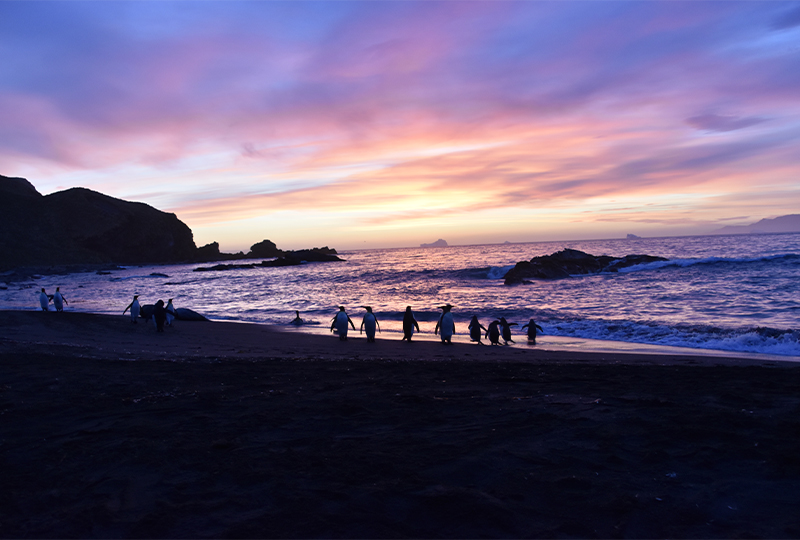
“We went and it was the most incredible thing that I’ve ever seen,” Flynn says. “There [were]penguins walking across the beach, everything was bathed in this amazing light, and the sky changed colors from minute to minute. Everyone is so quiet and just kind of absorbing everything.
“You don’t really want to get up at three o’clock in the morning, but you think, ‘When am I going to be back here again?’”
]]>“It’s an honor to be recognized for the work I’ve done advocating for women to be successful in mathematics—and, more broadly, for diversity,” Mast said.
Mast was among 18 U.S. scholars recognized for increasing the visibility and success of women in the mathematics field.
As a mathematician and a woman, Mast said she knows firsthand the challenges that women in STEM face. She was one of the few female graduate students in her mathematics Ph.D. program at the University of North Carolina in the 1990s—and the only one in her original class to finish the program, she said. She also recalled people who told her, “You’re not going to have a problem getting a job because you’re a woman. Universities are supposed to be hiring women now.”
But thanks to the work of Mast and her colleagues, women are getting closer to achieving parity with their male counterparts.
Over the past two decades, Mast has promoted the participation of women in math through her leadership in several organizations. As co-chair of the Joint Committee on Women in the Mathematical Sciences, she designed panels for women in math, including a panel on balancing professional and family life. As a member of the AWM executive committee, she helped mitigate implicit bias in the honors and awards processes in the mathematics community. With three colleagues, she co-edited the book Women in Mathematics: Celebrating the Centennial of the Mathematical Association of America (Springer International Publishing, 2017), which celebrates the contributions of women in mathematics.
As the first female dean of Fordham College at Rose Hill, Mast has mentored women in STEM student groups. Last fall, her office secured funding to create the ASPIRES Scholarship program, which provides mentorship and monetary support to underrepresented students in STEM—including young women. A few months ago, she became the director of the Clare Boothe Luce Program at Fordham, which provides scholarships for outstanding women undergraduate students and graduate fellows in the sciences.
“I’m very excited to work with the other deans and with the faculty to strengthen the support that we give to the Clare Boothe Luce scholars and to create a stronger community for women in STEM at Fordham,” Mast said. “We’ve got some amazing scientists and mathematicians here, and I’m really excited about bringing them together so that we can be even stronger.”
Mast will be honored at the AWM Reception and Awards Presentation in Denver on Jan. 16, 2020.
]]>